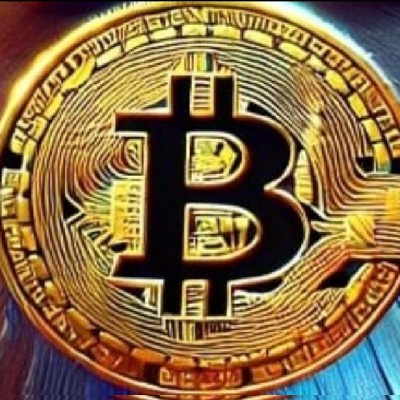Immortal Token, or IMT, is the native cryptocurrency of Immortal Rising 2, a blockchain-powered RPG
Latest Update: Immortal Rising 2 Statue NFT Whitelist ApplicaImmortal Rising 2 has opened applications for their Immortal Statue NFT whitelist. The application period ends at March 6 2025, and eligible participants can apply through the following process:
How to Apply
Access the whitelist application form
Answer all application questions including your Immortal Rising 2 UID (found in Game > Settings)
Connect required accounts:
Immutable Passport wallet (must match the one linked to Immortal Vault)
Twitter account
Discord account
Like and retweet the official Twitter post
Visit Immutable Play and complete all Immortal Rising 2 missions to increase your chances
Important Details
Mint price: Fixed at 50 USD worth of $IMX
Whitelist results will be announced on Discord a few days before mint
You must use the same Immutable Wallet linked to Immortal Vault to avoid disqualificationti
🎟️ NFT Access Passes for Exclusive Experiences 🔑🎶
🎟️ $PARTI 🔑🎶
Turn $PARTI into the key to exclusive events, VIP experiences, and digital collectibles through NFT-based access passes! Instead of traditional tickets, attendees hold limited-edition NFT passes that unlock premium perks in both real-world and virtual spaces.
🔹 How It Works:
✅ Mint or buy NFT tickets using $PARTI 🎟️💎
✅ Access VIP events, private parties, & secret concerts 🔥🥂
✅ Unlock exclusive perks like backstage passes, meet & greets, or rare digital merch 🎤📸
✅ Resell or trade NFT passes on secondary markets for added value 🔄💰
✅ Integrate with the metaverse for special in-game events or virtual club access 🌐🎧
This makes event access more transparent, secure, and collectible, giving fans and creators a new way to connect & monetize experiences. 🚀🎊
$PARTI's Innovative Approach to SocialFi
1. Introduction: The Evolution of SocialFi & $PARTI’s Role
SocialFi (Social Finance) is a new concept that blends social media, decentralized finance (DeFi), and blockchain technology to create a more open, user-centric digital economy. Unlike traditional social media platforms that control user data and revenue, SocialFi platforms empower creators by enabling direct monetization, decentralized governance, and transparent reward distribution.
$PARTI is pioneering a SocialFi revolution through its platform, Parti.com, by offering decentralized streaming, direct crypto payments, and tokenized engagement mechanisms. This model shifts power away from centralized platforms like YouTube and Twitch, allowing creators to fully own and monetize their content without platform interference.
2. Key Features of $PARTI’s SocialFi Model
A. Decentralized Monetization – Empowering Content Creators
One of the biggest problems with traditional platforms is unfair revenue-sharing models. Platforms like Twitch and YouTube take 30-50% of ad and subscription revenue, leaving creators with only a fraction of their earnings.
How $PARTI fixes this:
Direct crypto payments: Viewers can support streamers through peer-to-peer payments using $PARTI tokens, eliminating middlemen.
Full revenue retention: Unlike Twitch, which takes a massive cut, $PARTI allows creators to keep up to 100% of their earnings.
On-chain transparency: Smart contracts ensure that payments are instant and verifiable, reducing fraud and delayed payouts.
This Web3-based monetization model is a game-changer, as it gives streamers and content creators full financial independence.
B. Social Tokenization – A New Creator Economy
$PARTI introduces Social Tokens, allowing creators to launch their own personalized tokens that fans can purchase, trade, and use for exclusive perks.
Benefits of Social Tokens:
Stronger creator-fan relationships: Viewers can invest in their favorite creators by holding their tokens.
Exclusive access: Token holders can unlock private streams, personalized shoutouts, and VIP experiences.
Creator-controlled economies: Streamers can set their own token prices and supply, creating a self-sustaining micro-economy.
This tokenized engagement model transforms fans into stakeholders, fostering deeper community loyalty and participation.
C. NFT-Based Content Ownership
Most traditional streaming platforms own the rights to creators’ content. $PARTI solves this problem by integrating NFT-based content ownership.
How it works:
Content as NFTs: Streamers can mint their videos and moments as NFTs, ensuring they retain full ownership.
Sell & trade digital assets: Fans can buy exclusive video clips, artwork, or behind-the-scenes content.
Decentralized copyright protection: Since NFTs are stored on-chain, content ownership is permanent and transparent.
This model prevents censorship, unfair demonetization, and copyright disputes while creating new revenue opportunities for creators.
D. Decentralized Governance – Community-Owned Platform
Unlike centralized platforms where corporate executives make all decisions, $PARTI is designed to be governed by its users.
DAO (Decentralized Autonomous Organization) governance: Token holders can vote on platform policies, updates, and revenue-sharing models.
No corporate control: Decisions are community-driven, ensuring fairness and inclusivity.
Transparent rule-making: No risk of arbitrary bans or algorithm changes that harm creators.
By allowing users to participate in decision-making, $PARTI fosters a more democratic and creator-friendly environment.
3. How $PARTI Disrupts the Traditional Social Media Model
$PARTI’s SocialFi model directly challenges the existing Web2 social media and streaming industry by addressing key issues like:
This creator-first approach ensures that $PARTI is not just a streaming platform but a full-fledged SocialFi ecosystem.
4. The Future of SocialFi with $PARTI
A. Mass Adoption Potential
$PARTI is well-positioned to attract:
Crypto-savvy content creators who want financial independence.
Discontented Twitch/YouTube streamers seeking fair monetization.
Web3 investors & early adopters looking for SocialFi opportunities.
B. Potential Risks & Challenges
While $PARTI’s model is innovative, challenges include:
Adoption barriers: Convincing mainstream creators to switch from Web2 platforms.
Regulatory concerns: Governments may impose restrictions on crypto-based earnings.
Scalability & UX: Ensuring a smooth user experience across multiple blockchain networks.
However, with strategic partnerships and continued innovation, $PARTI has the potential to lead the SocialFi revolution.
5. Conclusion: A Paradigm Shift in Social Media & Finance
$PARTI’s SocialFi model is reshaping the creator economy by combining decentralized monetization, tokenized engagement, and community governance. By eliminating unfair revenue cuts, empowering creators with social tokens and NFTs, and giving users decision-making power, $PARTI is setting a new standard for the future of digital content platforms.
If executed effectively, $PARTI could become the Web3 alternative to Twitch, YouTube, and Patreon, fundamentally changing how creators earn and engage with their audiences.
$PARTI
🦅Where Next for Ripple (XRP): $1.50 or $5? Could This Emerging Altcoin Flip XRP? 🔥
🚀 $XRP is currently hovering around $2.39, trapped in a narrow trading range of $2.35 – $2.55. 📊 Many traders remain optimistic, fueled by the SEC’s dismissal of its case against Ripple Labs and analysts setting ambitious targets. Some experts predict $XRP could reach $6 – $27 by 2025-2026 and possibly $10 by 2030. But can this bullish momentum last, or will newer, more dynamic altcoins steal the spotlight? 🤔
💎 Mutuum Finance (MUTM) – The Rising Star?
A new DeFi project, Mutuum Finance (MUTM), is making waves! 🌊 Currently in Phase 3 of its presale 80% is already sold out at $0.02 per token.With the next phase bringing a 25% price hike to $0.025 early investors are getting an instant upside just by holding. 📈
🔎 $XRP at a Crossroads: Breakout or Breakdown?
With a symmetrical triangle pattern forming, key levels to watch are:
🔹 Resistance at $2.40
🔹 Support at $2.28
A break above $2.55 could push $XRP to $2.88, while a drop below $2.28 could see it falling to $2.00. ⚖️
The possibility of a Ripple IPO is also adding fuel to the speculation 🔥, but critics remain cautious about overly bullish projections. If $XRP fails to deliver, investors might shift focus to altcoins with clearer growth potential.
🌟 Mutuum Finance (MUTM) – The Presale Boom!
As $XRP traders debate its next move, Mutuum Finance is surging ahead with a promising lending protocol and robust tokenomics. 💰
📌 Key Highlights of MUTM:
✅ Presale Phase 3 – $5M Raised & 6,900 Holders
✅ Price Set to Increase by 25% to $0.025 🚀
✅ Projected Post-Listing Surge: $1.50 – $5.00 💎
✅ ROI Potential: 7,400% – 25,000% 🔥
Unlike speculative assets MUTM integrates a buy-and-distribute mechanism, where platform revenue is used to repurchase tokens—creating steady demand. 📈
💡 MUTM vs $XRP : The Verdict?
XRP’s growth relies on regulatory clarity and adoption, while MUTM already has a working utility! 🏦 The lending protocol allows users to deposit assets,mint yield-bearing mtTokens, and generate passive income—giving it a strong functional advantage in DeFi. 🔗
With Phase 3 nearly selling out,the chance to buy at the lowest price is slipping away! ⏳ If you're looking for an altcoin breakout, now might be the perfect time to jump into MUTM. 🌟
📌 Will $XRP reclaim its past glory or will MUTM be the next big thing? Let us know your thoughts! 👇💬
🔥 For More on Mutuum Finance (MUTM), Visit the Links Below! 🔗


 Самая низкая цена
Самая низкая цена Самая высокая цена
Самая высокая цена 










































